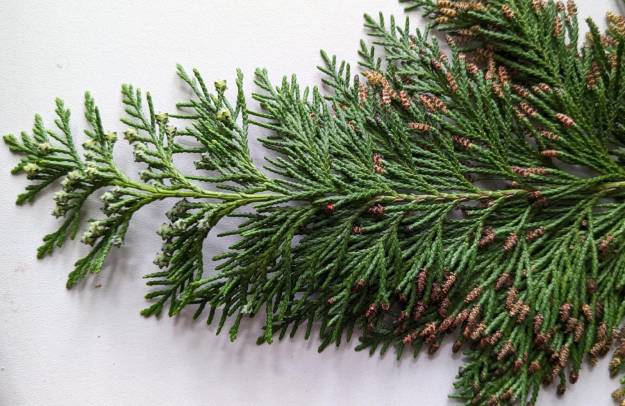Spring has sprung (finally) in the UK and now is the time that many trees flower, so they can pollinate the next generation with enough time for seeds to develop before winter. Plant reproduction is quite a complicated multi-stage process, but for the purposes of this post it’s enough to know that pollen is the vehicle for the male gamete (the plant equivalent of sperm). It is produced by anthers in angiosperms (flowering plants) and by male cones in gymnosperms (including conifers).
It turns out that pollen production can happen in different places. In some trees, both male and female parts are within the same flower (known as ‘perfect’ or ‘complete’ flowers). In others, they are separate flowers or cones on different parts of the same branch, shoot or tree – known as monoecious trees. In yet others they are separate flowers or cones on single-sex trees – known as dioecious.ref
Whilst female flowers/cones and the fruit associated with them are usually obvious, the pollen-bearing male flowers/cones are often hard to spot and sometimes people don’t even realise they are there (it was only about 2 years ago that I realised that oak trees even had flowers!). After releasing their pollen, male reproductive parts usually drop off and disappear from view, while the female flower/fruit/cone persists as the seeds develop. So it’s definitely worth appreciating male tree flowers when you see them, as they don’t hang around for long.
In angiosperms, many male tree flowers take the form of catkins. A catkin is an “elongated cluster of single-sex flowers bearing scaly bracts and usually lacking petals.”ref Male catkins appear on oak, chestnut, alder, birch, hazel, poplar, aspen, hornbeam, walnut and willow – a good overview of these is on the UK Tree Guide website and some examples are shown below. There are female catkins as well, but these don’t contain pollen, which is one way to tell them apart.





Some trees have flowers that look more like what we learn about at school, so-called ‘perfect’ flowers, with both male and female parts. Examples of trees with this type of flower structure include maples, hawthorn, lime, horse chestnut and many fruit trees including apple, cherry, pear and plum (see below).





Gymnosperms do not have flowers at all, instead they have male and female cones (also called strobili). 98% of gymnosperms use the wind for pollination, with the male pollen cones releasing their pollen into the wind to find its way to females.ref Because this is a bit of a hit and miss approach, gymnosperms produce a *lot* of pollen – one study estimated Juniper pollen production to be up to 532 billion pollen grains per tree!ref These vast quantities of pollen create pollen clouds, which you can see in a video on youtube here.
Another nifty thing is that female conifer cones produce a ‘pollination drop’ – this is a drop of liquid which sits on the surface of the cone to catch wind-borne pollen. As soon as pollination takes place, the drop is quickly retracted back into the cone.ref And you’ll notice that often male pollen cones are positioned at the top of a tree and in open positions along the stem (ie. not covered by leaves), to give their pollen the best chance of going far and wide.ref
Male cones on gymnosperms are smaller and less conspicuous than females, but, I think they’re still beautiful and worthy of our appreciation. Here are some examples of gymnosperm male cones:







Conifer species which have leaflets have a sort of tree-within-a-tree approach – such as the cypress below. – it has browny-pink male pollen cones on the ends of the shoots towards the back of the leaflet, and green developing female cones on the ends of the shoots at the tip of the leaflet.

There are more great images including scanning electron microscope images of gymnosperm pollen in this research paper.
But what if the trees in your bonsai collection don’t have any flowers or cones at all? Unfortunately this is a sign that they haven’t yet reached their reproductive phase. It’s hypothesised that a plant’s transition to its reproductive phase happens after a certain number of cell divisions have taken place.ref If you keep pruning the new growth off, your tree may never reach a reproductive phase, since it may never achieve the number of cell divisions required. The only way around this is to let your tree grow, use a mature tree to begin with, or use grafted material which comes from mature trees.
In the meantime, make sure to take a good look at your trees and the trees around you, and appreciate the underrated male tree flowers when they make an appearance.

